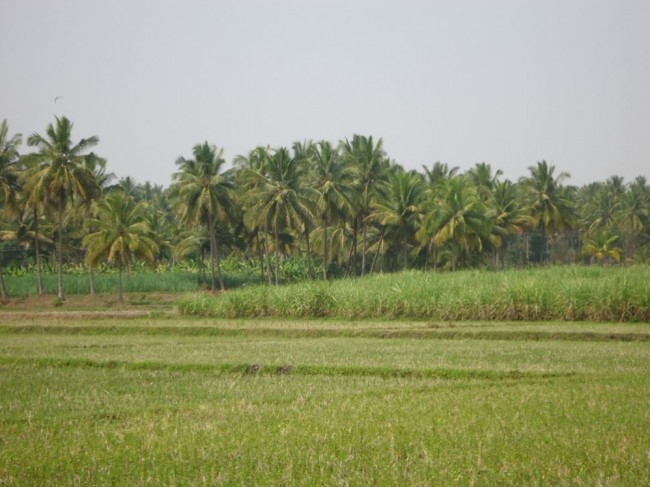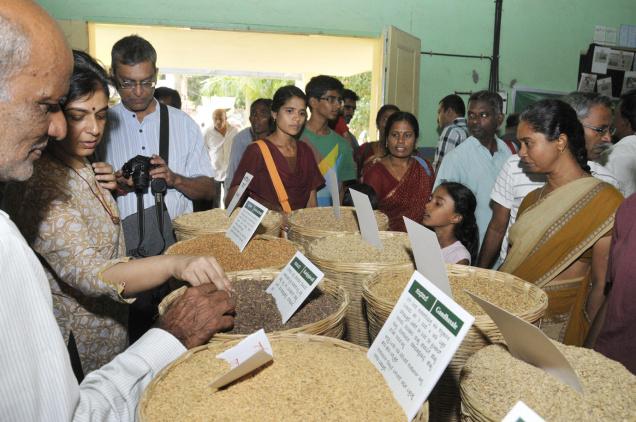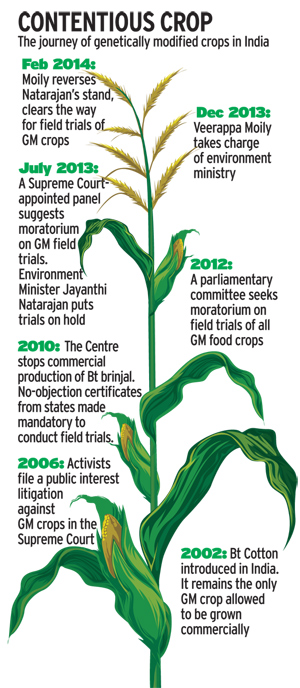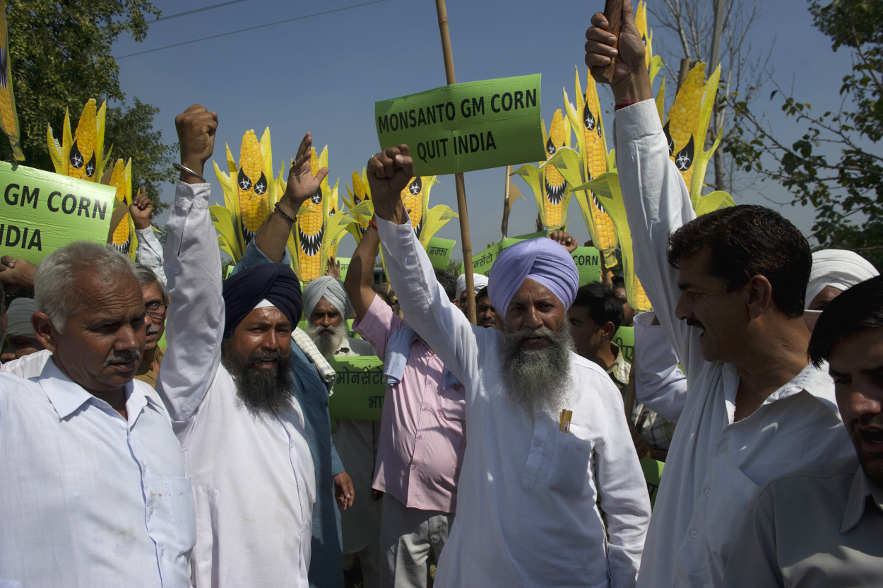The agro-ecological farming systems of India have been placed under modern threat from the time that the ‘Green Revolution’ was planned. This planning became manifest through the direct policy support given to the public finance and sanction given to the creation of ‘command areas’ which were fed by the water collected behind new large dams; but it also became manifest through the connections that were being created between our national agricultural research system and the west, in particular the agricultural universities of the USA.

That threat took form in the early 1960s, and one of its results was to lead a generation of crop scientists, agricultural administrators, and state and central governments to accept ‘high yielding’ and ‘productivity’ and ‘hybrids’ as the only dimensions of the relationship between staple crops and the provision of food to people. These views were successfully marketed, thanks to sustained and continuous support by the government machinery, to the consuming public, and even found place in school textbooks in all major languages. In this way, the idea that a ‘scientific’ approach to new ways of growing our staple crops was projected to our society as being the only modern way.
When this happened, over a generation of younger citizens who became adults in the early 2000s, the idea that agriculture is equal to well-applied doses of science was one that went largely unquestioned. Meanwhile, the role of the kisan was deliberately diminished. By the end of the active stage of the ‘Green Revolution’, the farmers’ claims to being scientists, innovators, natural resource stewards, seed savers, and hybridisation experts were taken away. Instead, they were reduced to becoming recipients of technical fixes and consumers of the poisonous products of a growing agricultural inputs industry.
It is against such a background – which is a chapter of the overall transformation of the cultivation of food in India – that the opposition to genetically modified crops and food is to be viewed. The steadfast opposition to this technology is grounded in the recognition that our country’s immense biodiversity of seeds, plants and life forms is our collective heritage, which has evolved through the cumulative innovations, adaptations and selections of many generations of indigenous farming communities, for whom these seeds and life forms are sacred.

When this position is understood, then the reason why genetically modified organisms – uncontrollable and irreversible when let into the agro-ecological environment – and their produce is so despised becomes plain. It is not a matter of science alone, as the geneticists and their financiers claim, but has as much, if not more, to do with culture, independence, and self-reliance. These are essential aspects of the GM discussion which the proponents and advocates cannot employ, because none of these aspects favours their position.
Articles such as ‘GM crops debate can do without Swadeshi paranoia’ (by Surajit Dasgupta in Niticentral, 30 July 2014) follow a pattern of advocacy. They treat technology of GM as being by itself the silver bullet that can solve all crop problems, they elevate GM scientists over all other science related to the practice of agriculture, they denigrate shamefully and belittle the farmer and her knowledge, and they cast slurs on all those who are critical of GM and seek to discredit them by citing academic papers and other material that advocates GM. This is the pattern that we are seeing not only in India, but wherever there is opposition to GM and to the policies that the technology depends on to enter a country.
The growing of our crop staples, of vegetables and fruit, has to do with a great deal more than the adoption of a particular technology. On everything other than the need (always framed as ‘urgent’) to accept GM, the proponents and advocates of this technology can join no discussion, for that is the limit of their argument. For a generation, farmers’ groups and unions have been protesting the neglect that farm livelihoods have been subjected to; they have continue to protest policy impacts that have caused the displacement of farmers in huge numbers, because smallholder farming earns them nothing, or because their farms are swallowed up by racing urbanisation; they have been demanding a minimum living income as a guarantee to all farm households, which must be their due as food growers.

Who are they and what do they have? They have 85% of the total holdings in the country (117.60 million marginal and small holdings of the total of 138.34 million), which account for 44.5% of the land area under agriculture (71.15 million hectares of the total of 159.59 million hectares). It is this large section of our people, the providers of India’s food on that 85% of all farm holdings, whom we are accustomed to call ‘anna-daata‘, that is represented by organisations like the Bhartiya Kisan Union, the largest farmers’ union in the country, which has opposed GM crops (and field trials) from the outset.
“We are concerned about farm community’s and nation’s seed and food sovereignty which will certainly be eroded when GMOs are pursued as a technology,” was the BKU statement, which powerfully shows us why GM is a socio-economic, ecological and cultural question, none of which is subordinated to science.
This is what is worrying. Technological and market fixes have not shortened this list of worries but have done the opposite. The subject for us is the growing of crop staples, or crop choice, the methods used to cultivate, the support that the farmer finds, and the environmental and cultural links between crop grower and food consumer.
When considering this multi-dimensional nature of food and farming, it is important to note (which the GM advocates and proponents omit) that conventional crop breeding continues to meet important challenges like improving drought tolerance, improving nitrogen fertiliser efficiency, and increasing yields according to the contexts of the different agro-ecological regions in our country. When we reached self-sufficiency in food staples, we did so by relying on crop breeding together with providing support (erratic as it was, prone to politically manipulation) to our ‘kisans’. Where then is the place for GM?

There is none. That is why proponents have resorted to quoting papers that are designed by institutions outside India which have a great interest in facilitating the grabbing of our genetic commons and bio-cultural heritage to be privatised and monopolised. The Bharat Beej Swaraj Manch had stated their opposition to GM most forcefully in a statement (released in New Delhi earlier this year):
We assert our sovereign rights to freely plant, use, reproduce, select, improve, adapt, save, share, exchange or sell our seeds – without restriction or hindrance – as we have done for past millennia.
GM has no place in this assertion, by a country-wide seed savers’ network, of the rights of farmers.
Geneticist warns against dangers of fiddling with nature – In an interview, Geneticist P C Kesavan warns how Genetic Engineering causes disruption of coordinated molecular and cellular functions that evolved over millions of years. The immediate consequence of that is the other genes that were functioning normally begin to become abnormal. (checked on 28 Nov. 2015)
First Published on The Alternative (archive)